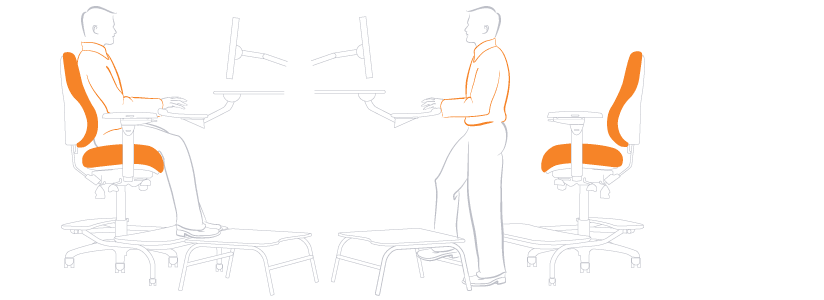Office Ergonomic Principles
Chair
- Set the height of your chair to allow support of your feet with either a footrest, Fring™ Footrest or if your workstation height will allow, place them flat on the floor supporting your feet and lower legs only.
- Make sure the angle between your torso and legs is greater than 90°.
- Allow 2" – 4" of space between the waterfall front of the seat cushion and the back of your knee.
- Relax your shoulders.
- Support your forearms while keeping your elbows and wrists in a neutral position with your wrists at or below elbow height.
- Position the backrest nearly upright, or slightly reclined if you have head support.
- Fine tune the backrest to provide full support of your lumbar curve.
Keyboard
- Adjust the keyboard to keep your arms, wrists and hands in a straight line. Your hands should be slightly lower than your elbows.
- Place the mouse and keyboard at the same height with the mouse close to the keyboard.
- Allow sufficient clearance below the keyboard for your knees and legs to move (at least 1" – 2").
Monitor
- Place directly in front of the keyboard (centered on "g/h" split of the keyboard) with the top of the screen at or below eye level (at least 24" from eyes).
- Adjust the screen angle to eliminate glare.
- Use a document holder to place documents as close to the monitor as possible, preferably at the same height and viewing distance from your eyes.
- Illuminate your documents properly with direct task lighting.
- To reduce eye strain avert your eyes from the monitor periodically and focus on distant objects.



